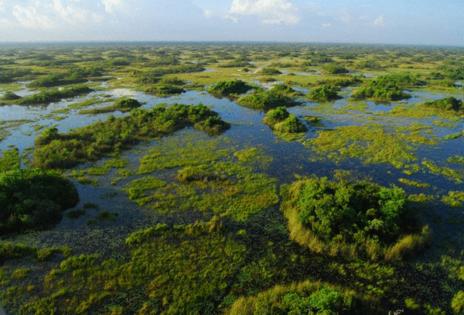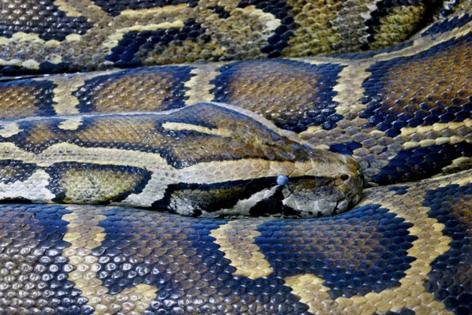Invasive carnivore plaguing Florida can completely absorb skeletons, study says
Published in News & Features
MIAMI — The invasive Burmese pythons plaguing Florida have an almost supernatural ability to absorb skeletons and scientists say they have finally found out how it’s done.
Turns out the intimidating predators have “previously unknown cell type” in the walls of their intestines that completely dissolves skeletons, according to a study published June 25 in the Journal of Experimental Biology.
The revelation helps explain why the giant snakes — which can grow to 18 feet in Florida — are not afraid to swallow creatures that are nearly equal in size, experts say.
Professor Jehan-Hervé Lignot of the University of Montpellier in France is credited with making the discovery, using captive juvenile pythons as his test subjects.
It has long been known that bones went into pythons and never came out the other end, but the “mechanisms that enable them to do this have remained mysterious until now,” Lignot told Eureka Alert!
To solve the mystery, researchers fed three types of meals to young pythons: Whole rodents, rodents with no bones, and boneless rodents injected with calcium carbonate, the study reports.
It became clear that the intestines of the snakes reacted differently when they were fed whole rodents or rodents injected with calcium, the researchers said.
Not only were they able to completely dissolve the skeletons, but they also were able to excrete excess calcium in cases where too much bone was consumed, tests showed.
Not even fragments of bones showed up in their feces, the team found.
“This study revealed the presence of a new type of cell along the intestine that is involved in the production of large particles made from calcium, phosphorus and iron,” a July 9 news release says. “When fed with boneless prey, these calcium and phosphorus-rich particles were not produced.”
The newly discovered “bone-digesting cell” has since been found in other species of pythons and boas, along with venomous Gila monsters native to the Southwestern United States and Mexico, the study reports.
“Marine predators that eat bony fish or aquatic mammals must face the same problem,” Lignot said in the release. “Birds that eat mostly bones, such as the bearded vulture, would be fascinating candidates too.”
Native to Southeast Asia, burmese pythons were introduced to South Florida “due to accidental or intentional release of captive pet animals,” the Florida Fish and Wildlife Conservation Commission reports.
The snakes have no natural enemies in Florida and they are creating havoc with the ecosystem by preying on native wildlife, including deer and alligators, experts say.
In 2022, the Conservancy of Southwest Florida discovered a 115-pound python in the process of swallowing a 77-pound deer, which amounted to 66.9% of the snake’s body mass, officials said.
A study published in 2024 also revealed the predators are capable of eating each other, McClatchy News reported.
©2025 Miami Herald. Visit at miamiherald.com. Distributed by Tribune Content Agency, LLC.










Comments